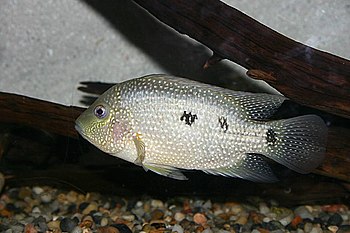 |
| Fish in marin aquarium. (Photo credit: Wikipedia) |
Temperature Control For Your Aquarium
When it comes to caring for your aquarium fish, temperature control is one of the most important aspects. Although we may really feel the weather outside, your aquarium fish are more likely to suffer from any drastic changes to temperature which occurs inside the aquarium. So the following tips are worth noting:
1) Ensure that you switch the lights off during the hottest part of the day.
2) Check that your heater is properly working and keeping a steady temperature. Water which is too warm may result in the fish suffocating.
3) If you need to make any change in temperature always do so gradually.
Regular Care and Maintenance of Your Aquarium
Regular care is needed if you have an aquarium. This regular maintenance should involve vigorous aeration and filtration. Make sure that you clean your tank out regularly to ensure that the fish remain healthy.
Aquarium General Tips
Following these general tips should lead to a better environment for your aquarium fish:
1) Limit the number of fish in your aquarium to maximise the amount of oxygen for each fish. It will also help minimise the number of times you will need to clean the aquarium.
2) Make sure that you think about the positioning of the aquarium – it shouldn’t be in direct sunlight as this may increase the amount of algae.
3) Research the fish before you buy. You need to check that each fish you put into the aquarium is compatible with the general environment and with the other fish.
4) You should change 25% of the water in the aquarium weekly to help maintain a healthy water balance for your fish



